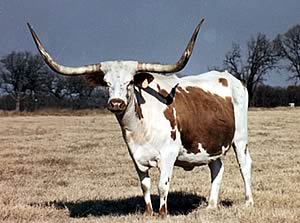| |
|
2009-04-27
The Texas Animal Health Commission (TAHC) has released from temporary preventive quarantine more than 375,000 acres in Maverick, Dimmit and Webb counties.
The preventive quarantine had been imposed on the three counties more than a year ago to prevent the spread of dangerous cattle fever ticks. Further south in Zapata and Starr counties, however, more fever tick-infested ranches are being detected at a disturbing rate, and concerns remain for sustainable fever tick program funding, fever tick surveillance and the approval of new products for treating fever tick hosts.
Cattle fever ticks are capable of carrying and transmitting ‘babesia,’ a blood parasite deadly to cattle. Although the ticks were eradicated from the U.S. in 1943, the vigilance against the pest cannot end, due to its existence in Mexico. A permanent fever tick quarantine line a few hundred yards to five miles wide runs along the U.S. border through eight south Texas counties, and is patrolled on horseback by the USDA’s Tick Force to protect against stray “ticky” livestock and wildlife crossing the Rio Grande.
Livestock moved from the permanent quarantine zone must be individually inspected by USDA or TAHC inspectors, treated and permitted to leave the zone. More problematic, however, is wildlife movement. Deer, elk, nilgai and other species of captive or free-ranging wildlife can play host to the tick, moving it from pasture to pasture. Regardless if they are moved by inappropriate livestock movement or wildlife, sporadic cattle fever tick incursions occur, requiring producers and state and federal animal health agencies to take aggressive actions, such as temporary preventive quarantines, to prevent the spread of the potentially deadly pest. In 1973, the largest outbreak occurred, with 170 tick-infested premises detected in Texas. Last federal fiscal year (October 1, 2007-September 30, 2008) came in second, with 132 infested premises found. In the first seven months of FY 2009, 89 fever tick-infested premises already have been detected, and if the rate continues, this could be the worst year for fever ticks since eradication was achieved in 1943.
“The release of 375,000 acres in the temporary preventive quarantine area means that livestock on 255 premises in Maverick, Dimmit and Webb counties can now be moved without restrictions, although everyone in south Texas must remain vigilant for this foreign livestock pest. The temporary quarantine in these counties had been imposed since August 2007 and was adjusted in April 2008,” said Dr. Bob Hillman, executive director of the TAHC, the state’s livestock and poultry health regulatory agency. The temporary preventive quarantine will remain in effect for 247,388 acres, encompassing 28 ranches.
Since October 1, two tick-infested premises have been detected in Maverick County and one in Webb County, both of which are in the permanent quarantine zone. Another tick-infested premises was detected in Dimmit County and remains under quarantine. Infested, exposed and adjacent premises remain under movement restrictions and treatment requirements until repeated inspections indicate the livestock and premises are fever tick-free.
Released from the temporary preventive quarantine is the northwest end of the area that included the city of Eagle Pass. On the southern edge, all Webb County locations that were in the temporary preventive quarantine area have been released. The eastern edge of the preventive quarantine now meanders south and southwest along ranch fence lines from near the intersection of County Road 1936 and Highway 277 to Mines Road (FM 1021) just inside Dimmit County. The western edge butts up against the permanent fever tick quarantine line. (A map of the released and currently quarantined area is available on the TAHC website at www.tahc.state.tx.us or by emailing ceverett@tahc.state.tx.us .)
“While commendable progress has been made in Maverick, Dimmit and Webb counties, fever tick-infested premises have been detected at the rate of more than one per day in Starr and Zapata counties since April 1,”
Since October 1, 46 tick-infested premises have been detected in Zapata County, and 36 in Starr County. One tick-infested premises each have been found in Brooks, Cameron and Kinney counties.
“Temporary preventive quarantines were established in Starr and Zapata counties in summer 2007. Due to increasing tick infestations, the quarantine areas were enlarged in April and July 2008 to its current area of 423,509 acres, which also includes a small area in Jim Hogg County,” said Dr. Hillman.
“Now especially disturbing is the cluster of tick-infested premises near the Starr-Hidalgo county line, away from the permanent or temporary quarantine area,” noted Dr. Hillman. This cluster of infested premises is quarantined, as are the premises in a 10-mile perimeter. “Epidemiologists are working to determine the source and distribution of this infestation. Whether it was caused by ‘ticky’ wildlife or inappropriate livestock movement is not yet known. It also is still too early to know if an additional temporary preventive quarantine area is needed.”
Each time another tick-infested premises is added, the eradication program costs rise, as USDA and TAHC inspectors must manually inspect cattle and horses and haul equipment to treat the animals on a 14-day cycle for dips or sprays, or a 28-day cycle for cattle in the product trial for Dectomax, an injectable acaracide. Furthermore, wildlife must be treated for fever ticks with medicated feed, which is removed prior to hunting season, due to the drug’s withdrawal period. “It is also very costly for the producers who must gather their cattle. In south Texas, helicopters, dogs and cowboys on horseback may be needed to coax cattle out of the dense underbrush,” he said.
“A premises may be found to be tick-infested today, but ‘ticky’ cattle may have been moved from that ranch in shipments for the past six months or even longer,” said Dr. Hillman. “We must obtain all available records, trace the animal movement, and conduct inspections and treatment to determine if ticks have been spread. This is extremely time-consuming, particularly when animals have no identification, prolonging and complicating the ‘detective’ work of our inspectors and epidemiologists.”
Dr. Hillman noted that, to be fully functional, the USDA’s fever tick program requires about $14.7 million a year for personnel, equipment, supplies, and treatment product. He stressed that TAHC field staff members are rotated into south Texas to complement the federal workforce in the impacted areas and that TAHC staff handle all tracing of cattle moved from infested premises and their subsequent inspection and treatment.
“The fever tick eradication effort has received several infusions of emergency funding, including $4.9 million in January. While this will be sufficient to address immediate issues until fall, the USDA fever tick eradication program needs dependable funding to support the control and eradication of this pest that has the potential for spread and sustainability throughout the southern U.S.,” stressed Dr. Hillman.
Concern over potential fever tick exposure has led some south Texas producers to voluntarily request inspection and treatment of livestock shipments headed north. Likewise, south Texas producers have volunteered to have cattle inspected during normal managerial working of the herd. “This voluntary inspection can be a valuable marketing tool for south Texas ranchers,” said Dr. Hillman. “Likewise, some buyers of south Texas cattle are requesting that cattle be inspected and treated before accepting shipments, to ensure they receive fever tick-free cattle.”
“Fever ticks are not just a Texas issue. Although we’ve been able to keep these pests somewhat contained, they could escape our boundaries, and similar staffing, inspection and treatment will be needed in other states, too. Fever ticks are a foreign tick that has made an incursion into the U.S. and this pest needs to be addressed comprehensively, before it spreads. This includes the approval and use of new, innovative treatments for both livestock and wildlife.”
Dr. Hillman noted that current approved treatments are limited to dips and sprays for cattle and horses, and a trial is ongoing for Dectomax, an injectable acaracide. Wildlife treatment is restricted to medicated feeds and a unique four-poster treatment system. “New products have been explored, but approval for use has not been forthcoming,” he said. “It does no good to develop an effective product, then leave it on the shelf during a massive fever tick outbreak.”
 Cost Effective Sheep Bluetongue Vaccine Launched in UK Cost Effective Sheep Bluetongue Vaccine Launched in UK
 New Cattle TB Infection in Texas Dairy New Cattle TB Infection in Texas Dairy
 Fort Dodge Provides Bluetongue 1 Vaccine to Farmers in Jersey Fort Dodge Provides Bluetongue 1 Vaccine to Farmers in Jersey
|



